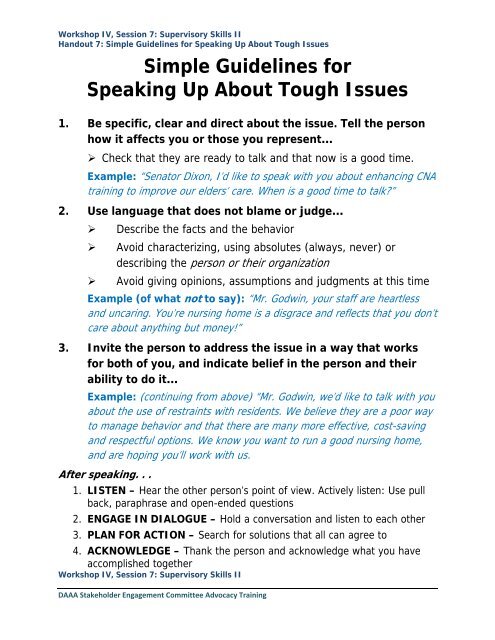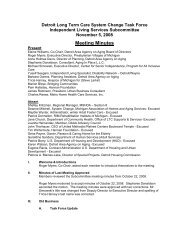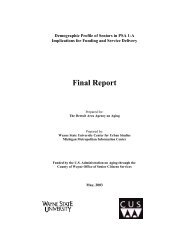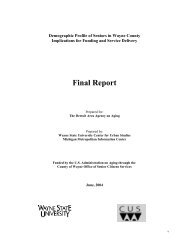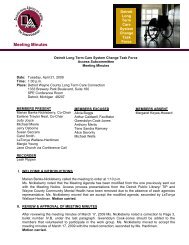Speaking up Effectively and Constructively as Advocates
Speaking up Effectively and Constructively as Advocates
Speaking up Effectively and Constructively as Advocates
Create successful ePaper yourself
Turn your PDF publications into a flip-book with our unique Google optimized e-Paper software.
Workshop IV, Session 7: S<strong>up</strong>ervisory Skills II<br />
H<strong>and</strong>out 7: Simple Guidelines for <strong>Speaking</strong> Up About Tough Issues<br />
Simple Guidelines for<br />
<strong>Speaking</strong> Up About Tough Issues<br />
1. Be specific, clear <strong>and</strong> direct about the issue. Tell the person<br />
how it affects you or those you represent…<br />
‣ Check that they are ready to talk <strong>and</strong> that now is a good time.<br />
Example: “Senator Dixon, I’d like to speak with you about enhancing CNA<br />
training to improve our elders’ care. When is a good time to talk?”<br />
2. Use language that does not blame or judge…<br />
‣ Describe the facts <strong>and</strong> the behavior<br />
‣ Avoid characterizing, using absolutes (always, never) or<br />
describing the person or their organization<br />
‣ Avoid giving opinions, <strong>as</strong>sumptions <strong>and</strong> judgments at this time<br />
Example (of what not to say): “Mr. Godwin, your staff are heartless<br />
<strong>and</strong> uncaring. You’re nursing home is a disgrace <strong>and</strong> reflects that you don’t<br />
care about anything but money!”<br />
3. Invite the person to address the issue in a way that works<br />
for both of you, <strong>and</strong> indicate belief in the person <strong>and</strong> their<br />
ability to do it…<br />
Example: (continuing from above) “Mr. Godwin, we’d like to talk with you<br />
about the use of restraints with resident s . We believe they are a poor way<br />
to manage behavior <strong>and</strong> that there are many more effective , cost-saving<br />
<strong>and</strong> respectful options. We know you want to run a good nursing home,<br />
<strong>and</strong> are hoping you’ll work with us.<br />
After speaking. . .<br />
1. LISTEN – Hear the other person’s point of view. Actively listen: Use pull<br />
back, paraphr<strong>as</strong>e <strong>and</strong> open-ended questions<br />
2. ENGAGE IN DIALOGUE – Hold a conversation <strong>and</strong> listen to each other<br />
3. PLAN FOR ACTION – Search for solutions that all can agree to<br />
4. ACKNOWLEDGE – Thank the person <strong>and</strong> acknowledge what you have<br />
accomplished together<br />
Workshop IV, Session 7: S<strong>up</strong>ervisory Skills II<br />
DAAA Stakeholder Engagement Committee Advocacy Training


